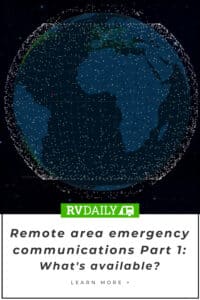Remote area communications Part 1: What’s available for emergencies?




What will you do when you need to call for help and your mobile is out of range? In part one of this two-part series on remote area emergency communications, Robert Pepper walks us through the available options when it comes to calling for help in regions with little to no phone reception.
Us humans have always needed and wanted to communicate, and today more than ever, as we’ve become accustomed to always-on, instant chat and voice. We’ve also become accustomed to working from home or an RV, so communication is more important than ever. But there are times when communications are definitely a need, not a want, and that’s when we’re in danger.
So in this two-part series of articles, we’ll take a look at the remote emergency communications options for travellers in Australia, as there have never been so many, and there’s even more to come. In Part 2, we’ll run through some use cases to help you choose what’s best for you.
For Aussie travellers, even those who aren’t into offroad travelling, you’re going to be safest with a system that works anywhere. So while UHF radio and mobile phones certainly have their place and you should be using both, neither can be relied upon everywhere in Australia.
There is also HF (High Frequency) radio, which works anywhere, in theory. But HF is sensitive to the environment, generally tied to your vehicle, requires a licence, is expensive to buy and isn’t, in my view, as good as some of the other options if all you want is simple and quick emergency communications. HF is great for many reasons, such as its community, and it can do SOS-help, but if that’s all you need, there are easier, cheaper and more effective methods.
So let’s look only at systems that use satellites. All devices use one of two types of satellite; LEO and GEO. The GEO (Geostationary System) uses just a few satellites at very high orbits of around 35,000 kilometres or so. As they’re so high, just a few can cover most of the earth, and the system is named because the satellites do not move relative to Earth.
The LEO (Low Earth Orbit System) uses satellites orbiting at several hundred kilometres above Earth, and therefore needs many more, tens or even thousands, to cover the globe. The difference for remote travellers is that the GEO system may not get you coverage at its fringes or in valleys, whereas the LEO probably will. However, LEO may possibly drop in and out as satellites ‘fly’ overhead. It’s important to research the quality of the coverage for the area you’re in.
Here’s an example of the Starlink LEO satellites. You can see them move in real-time at https://satellitemap.space/
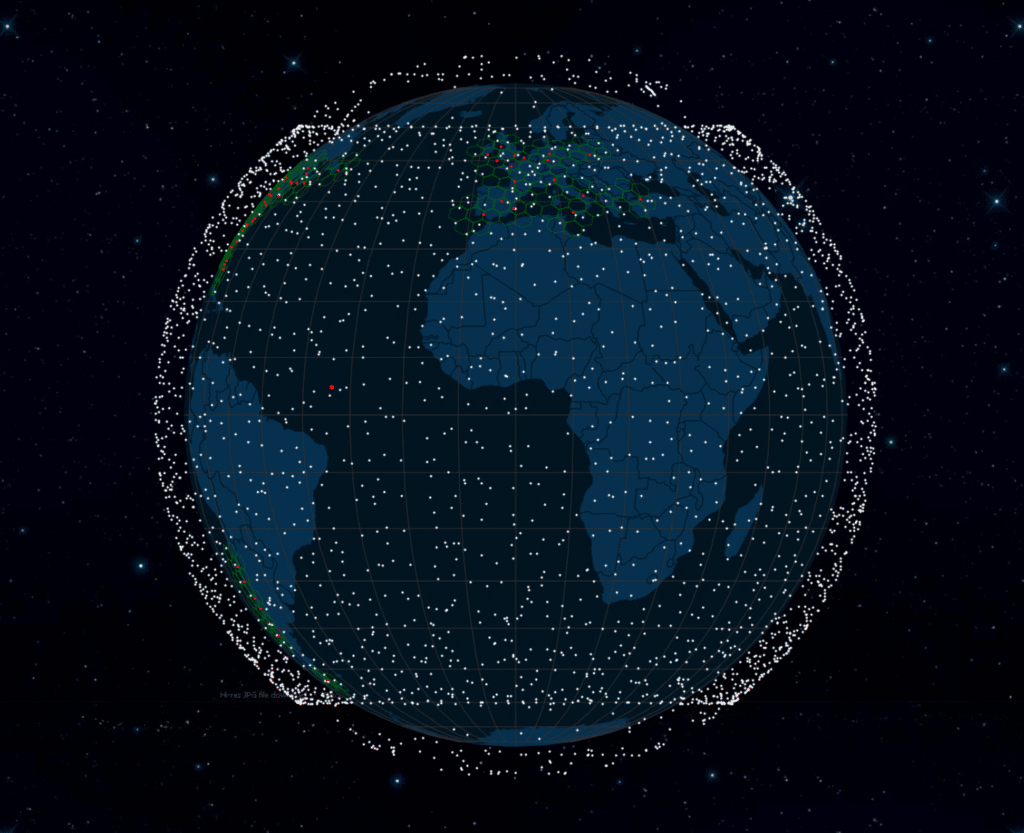
And here’s a coverage map for the Thuraya GEO satellites:

There’s now quite a number of satellite-based remote-area devices that could potentially be used in an emergency. There are satellite phones (satphone), Starlink, Apple’s new service, messages, and hotspots. Let’s take a look at them all, starting with satellite phones.
Satphones are phones that simply use satellites but are quite different to the modern smartphone. There’s no touchscreen, no (or very, very limited) data services, and they’re much bigger. Think of the big Nokia bricks of the late 90s and then some. Satphones are also far more robust than smartphones and have a much longer battery life.
You can make voice calls, send SMS texts, and there’s often an optional SOS button that requires some setup to use. Networks for satphones include LEO options Globalstar, which has had reliability issues but now has Apple investment, and Iridium. For GEO, there’s Thuraya and Inmarsat.

There are also sleeves for your smartphone, which turn it into a satphone, and units that take a normal GSM SIM card so they work on normal mobile networks as well as satellites.
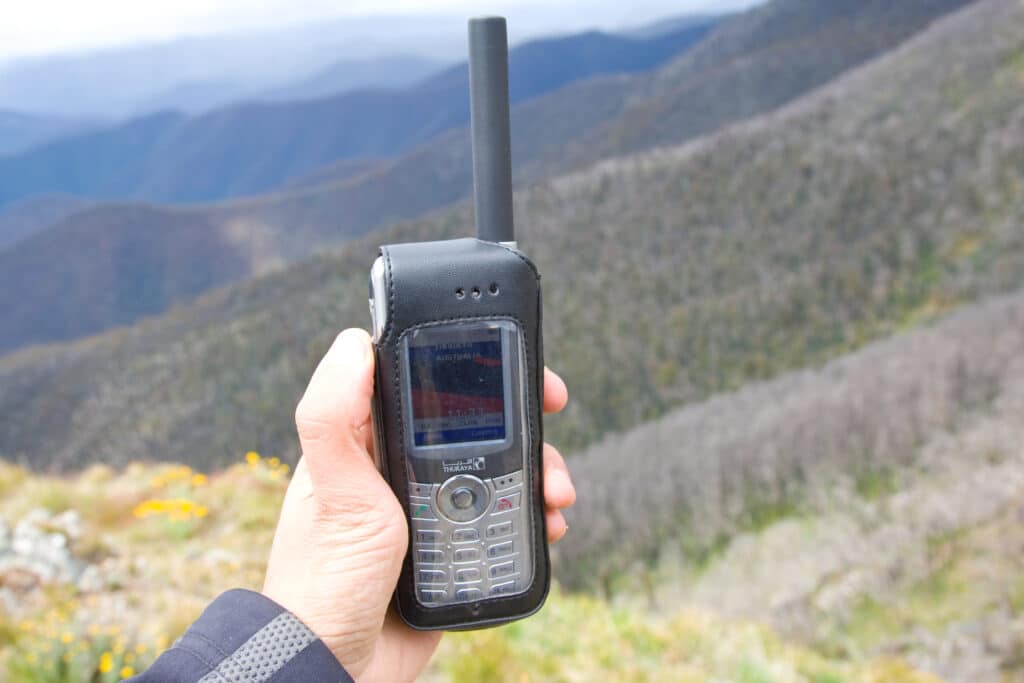
All satphones require a subscription, but if you have a Telstra mobile, you can simply swap your post-paid SIM card into the satphone, and it’ll work fine.
Then we come to the smartphone hotspots, and there are two common ones, Zoleo and Iridium Go. Both are designed to be connected to a Bluetooth phone or other device. The Zoleo has a messaging, tracking and SOS function via the Iridium network. The Go is also on Iridium and offers SOS, voice, text, and basic but slow data services via dedicated apps. Again, these require subscriptions.

Continuing the satellite device theme, we come to SENDs, or Satellite Emergency Notification Devices. These are portable devices that offer SOS, location tracking and text, but don’t rely on smartphones and offer no data services at all and no voice. They may be part of a GPS navigation receiver, such as Garmin’s inReach systems. And yes, subscription again!

A new option is now Apple’s emergency system. This is a feature on iPhone 14s and later which allows the phones to connect to satellites if there is no mobile reception for the purposes of sending messages to Apple’s emergency centre. To be really clear, this is just an emergency SOS, it’s not Internet access as you know it. Nor is it message anyone you like. You can send a variety of messages though, asking for help or to be rescued, and it is two-way. It’s free at present, but there will be a charge in future.
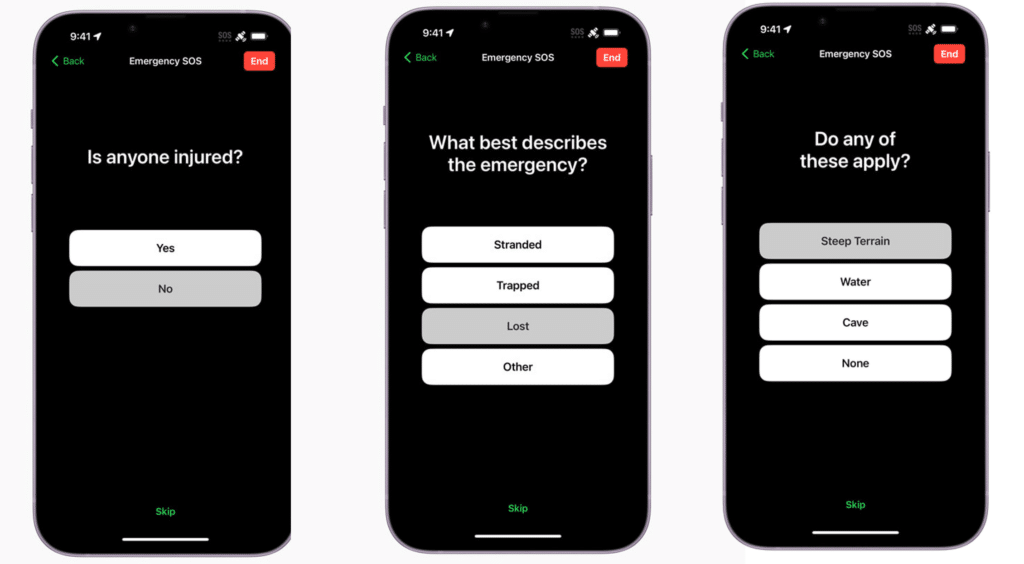
A different system is a distress beacon, of which there are three types: a Personal Locator Beacon (PLB), an EPIRB for marine use, and ELT for aviation. In the image below, the EPIRB is on the left and the PLB is on the right.
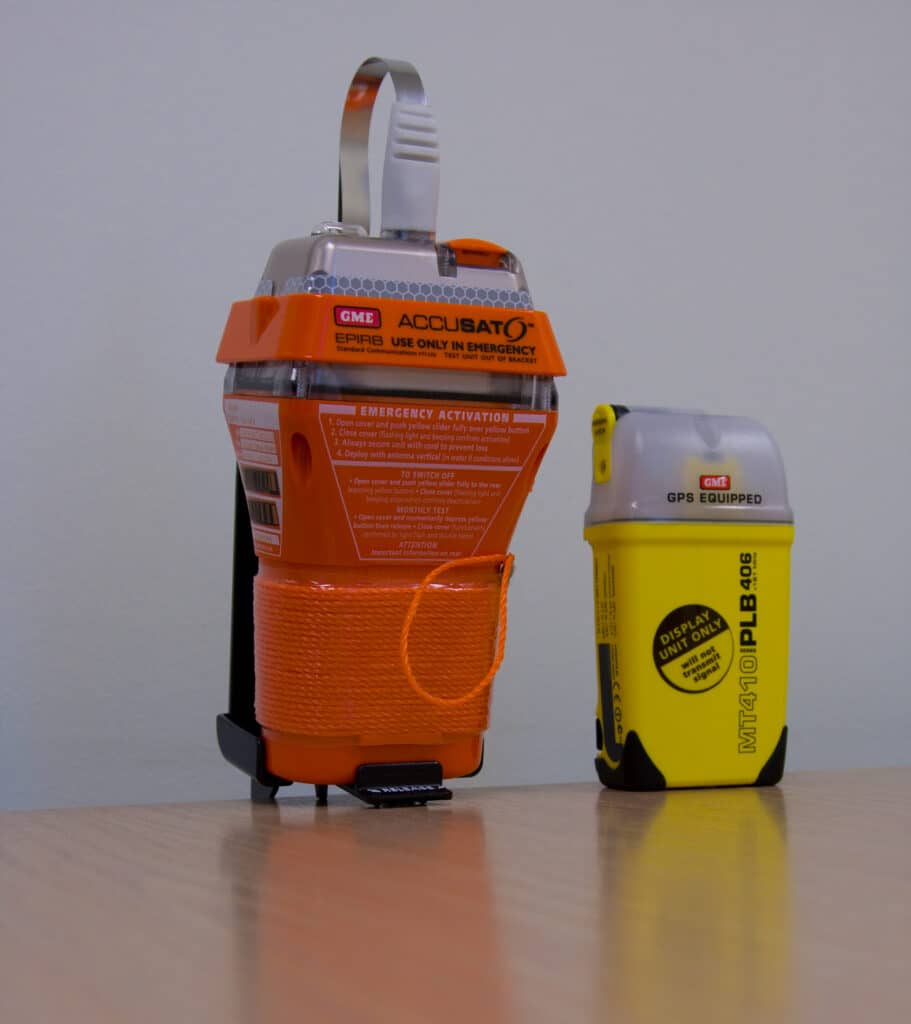
We’ll focus on the PLB as it’s what you’ll use for travelling.
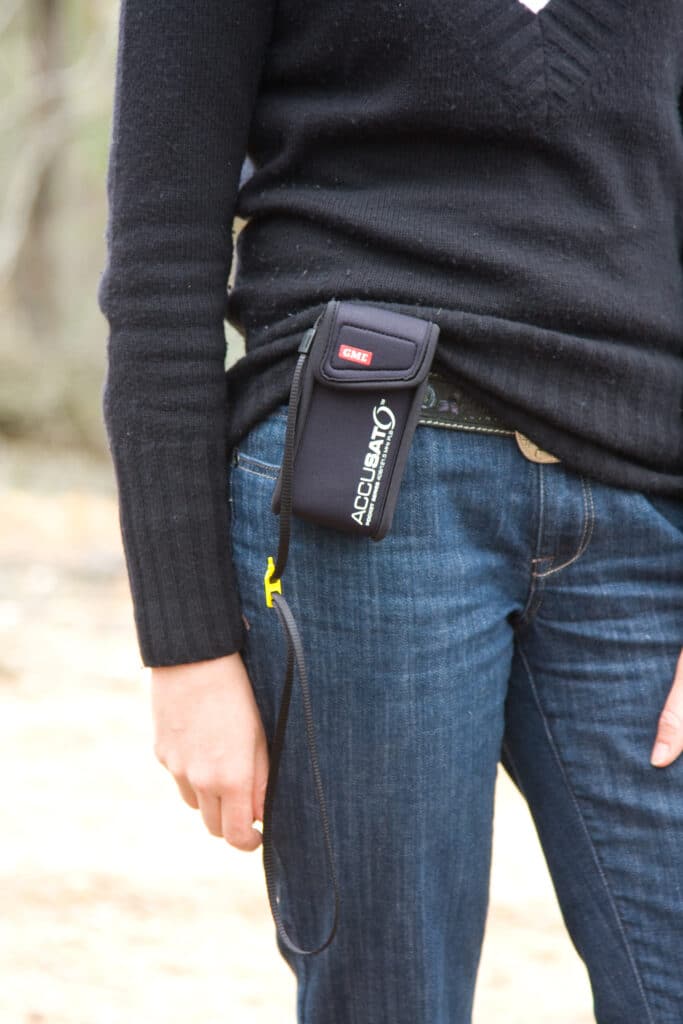
These are a one-off buy and require no subscription. They have one function only, and that is to summon your country’s emergency services in the event of, and only in the event of, a life-threatening situation. They do that job very, very well. A modern beacon will use all of the various satellite navigation systems like GPS to determine its position, then send a 406Mhz signal to the COSPAS-SARSAT network, which is the best network of networks for emergency comms, and even emit a homing signal on 121.5Mhz.
The newest models even confirm the emergency services have received your message via RLS, Return Link Service, and I’d suggest that’s worth paying for. The units last five years but should be checked regularly. You register the beacon’s ID, add your name, photos, contact details, next-of-kin, etc to AMSA’s registration system, and then when the beacon goes off, the authorities know who to look for. Other SOS features are the same and it’s important to take the time to set them up before you leave.
Finally, Starlink the popular satellite-based Internet access system.
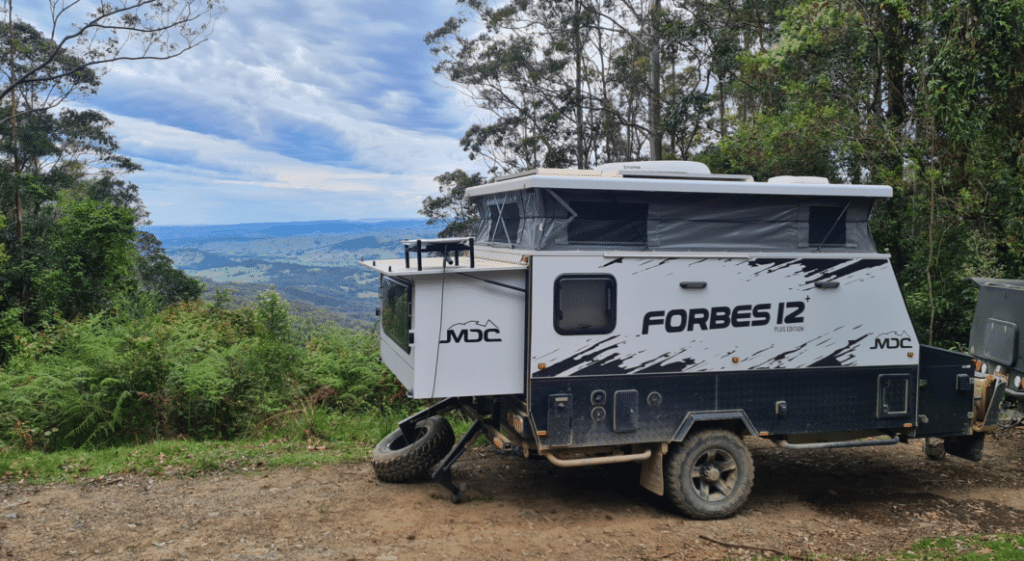
This consists of a dish you connect to a 240v power source, so that means a pure-sine inverter of at least 300w for most travellers, and it comes with a WiFi router to which you connect any device you like for high-speed Internet access. You can get even quicker Internet in the Simpson than you can in cities! However, it’s not very portable, being fragile, big and bulky, so it is not suited as a primary emergency communications system in the same way as a robust, portable device like a satphone.
In 2024-2025, things will change. SpaceX, the company behind Starlink, will offer true voice and data services to normal mobile phones! Now that’ll be a true game-changer, but for the moment, you’ve got decisions to make about which system to buy for what purpose. We’ll cover that in Part 2.
